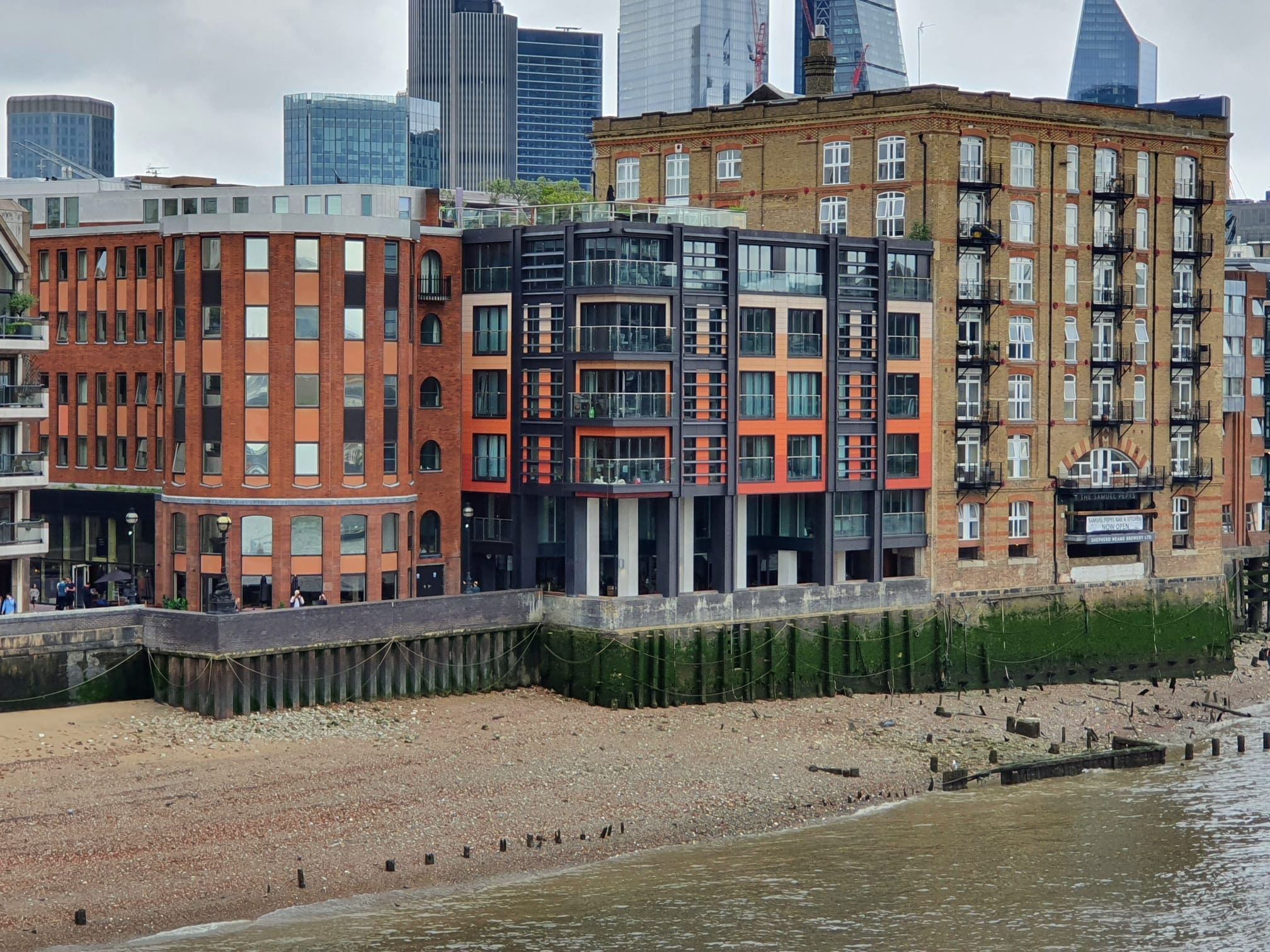Oliver v Sheffield City Council [2017] EWCA Civ 225 is a case associated with negligence and occupiers' liability pertaining to maintenance liability for a public pavement.
Oliver v Sheffield City Council [2017] EWCA Civ 225
Summary
Oliver v Sheffield City Council [2017] EWCA Civ 225 is a case associated with negligence and occupiers' liability pertaining to maintenance liability for a public pavement. A judgment delivered by the Court of Appeal elucidates, very explicitly citing examples of responsible care which a local authority should adorn towards pedestrians and to what level of standards are required to be maintained to make public walkways safe to prevent any mishap.
Facts
The appellant, Mr. Oliver, stumbled on a protruding tree root on a public footway maintained by the respondent, Sheffield City Council, and he was injured as a result. On this occasion, he fell on a residential area where a part of the rough pavement was affected by the roots of a tree. On the other hand, Mr. Oliver accused the dangerous condition of the footway of his falling down and subsequently injuring himself because Sheffield Council was supposed to maintain the footway in an acceptable standard.
It was in regard to this that Mr Oliver filed an action for negligence and breach of the duty of care under the said statute against the council in that the council should have been aware of the dangerous condition of the footpath and should have taken certain steps to remedy such.
Issues
The following are the issues raised by this case:
1. Whether a duty of care was owed by Sheffield City Council to maintain the said footpath and not expose pedestrians to hazard.
2. If such a duty was owed, whether the council breached such duty by not rectifying the hazard attributed to the tree root.
3. The level of maintenance which the council was reasonably expected to provide in the interest of maintaining public footpaths.".
4. Whether in failing to maintain the foot-path the council should have foreseen that Mr Olivia would suffer an injury.
First Instance
The action came before the County Court in the first instance. The judge had to determine whether there had been a breach of duty on the part of Sheffield City Council to allow a pavement to become a danger. Evidence was called of an inspection/maintenance regime operated by the council, each side submitting that it had in operation a reasonable system for the detecting and taking of remedial steps as to hazards on public footpaths.
The County Court judge struck out the claimant's case on the ground, first, that judgment had been entered that the inspection regime used by the council had been judged to be reasonable; second, that liability based on a protruding tree root could not be made out against the same. In summary, he regarded the council as having done no more and no less than might be expected from a judgmental local authority in the maintenance of public pavements.
Decision on Appeal The appellant, Mr Oliver, appealed on the ground that the County Court had erred in law in holding that the council's regime for inspecting and maintaining the trees was reasonable. His case at first instance had been that the council had been in breach of their duty of care to him by failing to identify and deal with the dangerous tree root prior to the accident.
It in effect allowed evidence as to the frequency and extent of examination of the highway by the council and the circumstances of the accident. The Court of Appeal allowed an appeal by Sheffield City Council from a judgment in the County Court that there was a reasonable system of inspection and maintenance.
The Court of Appeal further emphasized that there was no absolute duty of care and that the local authorities had to balance such against practical considerations for resource limitation and the need to deal with a formidable network of pathways in the public domain. What, in its view, the council did was consonant with what could reasonably be expected for the safety of pedestrians.
Comments
It was as though that is not enough; the judgment in Oliver v. Sheffield City Council is very important for a number of reasons.
1. Clarification of Duty of Care: It set very clearly the extent to which a duty of care relevant in safeguarding public walkways is owed by the local authorities. It, apart from that, reiterated squarely where the liability for ensuring safety fell—the councils. This duty in itself was not unconditional but had to be weighed against practicality.
2. Reasonable Inspection Regime: What is brought out clear enough here is the question of reasonableness of an inspection regime. I think what can easily be within the reach of a local authority to be in a position to demonstrate is that it has in place some organized program for finding and fixing hazards, even if it cannot promise to eliminate every possible danger forthwith.
3. It held that there had to be a balance maintained between the foreseeability of harm and the practicalities involved in taking precautions; hence coming up with the view that local authorities had decisions to make on priorities concerning resources and risk management in a manner that was reasonable and practical.
4. Precedent for cases in the Future: To set a precautionary precedent for future claims, concerning the maintenance of public footways has gone onto express that on the part of a claimant, there should be an ability to demonstrate not only that danger existed but also that a local authority had not acted within what is deemed reasonable to ensure public safety.
5. Implications for Local Authorities The judgment establishes best practice for local authorities in what standards should be achieved in the maintenance of public pathways. Specifically, it underlines once more that there needs to be some documentary requirement for procedures in inspection and maintenance with the burden of proof that these are consistently followed.
It is submitted that Oliver v Sheffield City Council [2017] EWCA Civ 225 essentially reiterates and reaffirms the "proposition" of reasonableness and pragmatism against the yardstick of apparent duty of care that local authorities are supposed to exercise. The ruling strikes the finest balance between what ought to be expected in terms of public safety and realities of resource management challenges that face local councils.
Social
Valuation Services provided by Ringley's Valuation Team
Block Management Packages
Legal Services provided by Ringley Law
Building Surveying Services
Meet our Expert Property Commentators
Oliver v Sheffield City Council [2017] EWCA Civ 225 is a case associated with negligence and occupiers' liability pertaining to maintenance liability for a public pavement.
Oliver v Sheffield City Council [2017] EWCA Civ 225
Summary
Oliver v Sheffield City Council [2017] EWCA Civ 225 is a case associated with negligence and occupiers' liability pertaining to maintenance liability for a public pavement. A judgment delivered by the Court of Appeal elucidates, very explicitly citing examples of responsible care which a local authority should adorn towards pedestrians and to what level of standards are required to be maintained to make public walkways safe to prevent any mishap.
Facts
The appellant, Mr. Oliver, stumbled on a protruding tree root on a public footway maintained by the respondent, Sheffield City Council, and he was injured as a result. On this occasion, he fell on a residential area where a part of the rough pavement was affected by the roots of a tree. On the other hand, Mr. Oliver accused the dangerous condition of the footway of his falling down and subsequently injuring himself because Sheffield Council was supposed to maintain the footway in an acceptable standard.
It was in regard to this that Mr Oliver filed an action for negligence and breach of the duty of care under the said statute against the council in that the council should have been aware of the dangerous condition of the footpath and should have taken certain steps to remedy such.
Issues
The following are the issues raised by this case:
1. Whether a duty of care was owed by Sheffield City Council to maintain the said footpath and not expose pedestrians to hazard.
2. If such a duty was owed, whether the council breached such duty by not rectifying the hazard attributed to the tree root.
3. The level of maintenance which the council was reasonably expected to provide in the interest of maintaining public footpaths.".
4. Whether in failing to maintain the foot-path the council should have foreseen that Mr Olivia would suffer an injury.
First Instance
The action came before the County Court in the first instance. The judge had to determine whether there had been a breach of duty on the part of Sheffield City Council to allow a pavement to become a danger. Evidence was called of an inspection/maintenance regime operated by the council, each side submitting that it had in operation a reasonable system for the detecting and taking of remedial steps as to hazards on public footpaths.
The County Court judge struck out the claimant's case on the ground, first, that judgment had been entered that the inspection regime used by the council had been judged to be reasonable; second, that liability based on a protruding tree root could not be made out against the same. In summary, he regarded the council as having done no more and no less than might be expected from a judgmental local authority in the maintenance of public pavements.
Decision on Appeal The appellant, Mr Oliver, appealed on the ground that the County Court had erred in law in holding that the council's regime for inspecting and maintaining the trees was reasonable. His case at first instance had been that the council had been in breach of their duty of care to him by failing to identify and deal with the dangerous tree root prior to the accident.
It in effect allowed evidence as to the frequency and extent of examination of the highway by the council and the circumstances of the accident. The Court of Appeal allowed an appeal by Sheffield City Council from a judgment in the County Court that there was a reasonable system of inspection and maintenance.
The Court of Appeal further emphasized that there was no absolute duty of care and that the local authorities had to balance such against practical considerations for resource limitation and the need to deal with a formidable network of pathways in the public domain. What, in its view, the council did was consonant with what could reasonably be expected for the safety of pedestrians.
Comments
It was as though that is not enough; the judgment in Oliver v. Sheffield City Council is very important for a number of reasons.
1. Clarification of Duty of Care: It set very clearly the extent to which a duty of care relevant in safeguarding public walkways is owed by the local authorities. It, apart from that, reiterated squarely where the liability for ensuring safety fell—the councils. This duty in itself was not unconditional but had to be weighed against practicality.
2. Reasonable Inspection Regime: What is brought out clear enough here is the question of reasonableness of an inspection regime. I think what can easily be within the reach of a local authority to be in a position to demonstrate is that it has in place some organized program for finding and fixing hazards, even if it cannot promise to eliminate every possible danger forthwith.
3. It held that there had to be a balance maintained between the foreseeability of harm and the practicalities involved in taking precautions; hence coming up with the view that local authorities had decisions to make on priorities concerning resources and risk management in a manner that was reasonable and practical.
4. Precedent for cases in the Future: To set a precautionary precedent for future claims, concerning the maintenance of public footways has gone onto express that on the part of a claimant, there should be an ability to demonstrate not only that danger existed but also that a local authority had not acted within what is deemed reasonable to ensure public safety.
5. Implications for Local Authorities The judgment establishes best practice for local authorities in what standards should be achieved in the maintenance of public pathways. Specifically, it underlines once more that there needs to be some documentary requirement for procedures in inspection and maintenance with the burden of proof that these are consistently followed.
It is submitted that Oliver v Sheffield City Council [2017] EWCA Civ 225 essentially reiterates and reaffirms the "proposition" of reasonableness and pragmatism against the yardstick of apparent duty of care that local authorities are supposed to exercise. The ruling strikes the finest balance between what ought to be expected in terms of public safety and realities of resource management challenges that face local councils.
Valuation Services provided by The Ringley Group
Meet our Expert Property Commentators























































